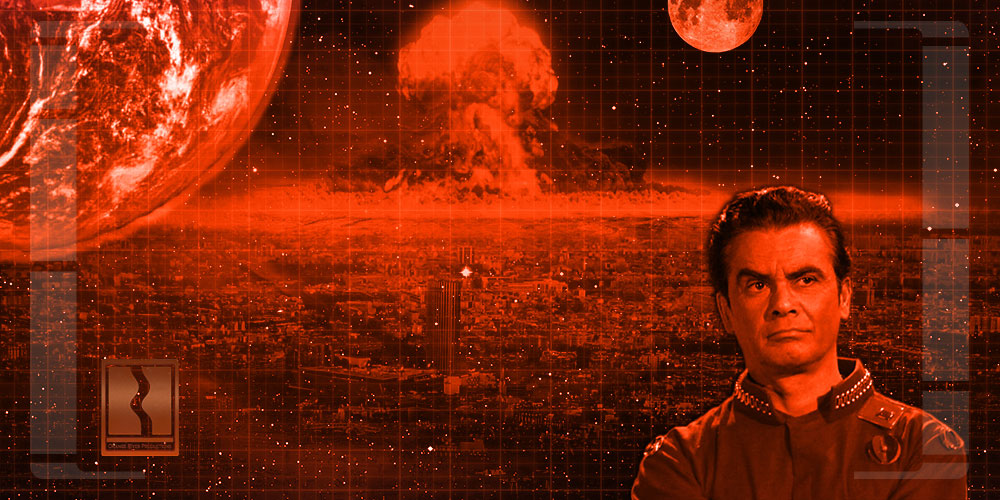If you’ve ever had the displeasure of experiencing the effects of a tornado or other extreme weather event, you’ve likely heard blaring sirens and a long, ear-piercing tone on your radio or television.
This is the Emergency Alert System. But something we don’t think about is that both of these were originally designed to be heard during a nuclear attack, with automated announcements on the airwaves calling for people to seek shelter.
Of course, even if you’re inside a house or even a concrete building within the blast radius of a nuclear explosion, you won’t be so lucky. In a World War III-scale nuclear attack, with potentially thousands of bombs exchanged, entire cities and thus entire populations would be wiped from existence.
The most remote areas—rural areas—would be the best protected from immediate attack but would be subject to nuclear fallout and the breakdown of civil society just beyond their borders.
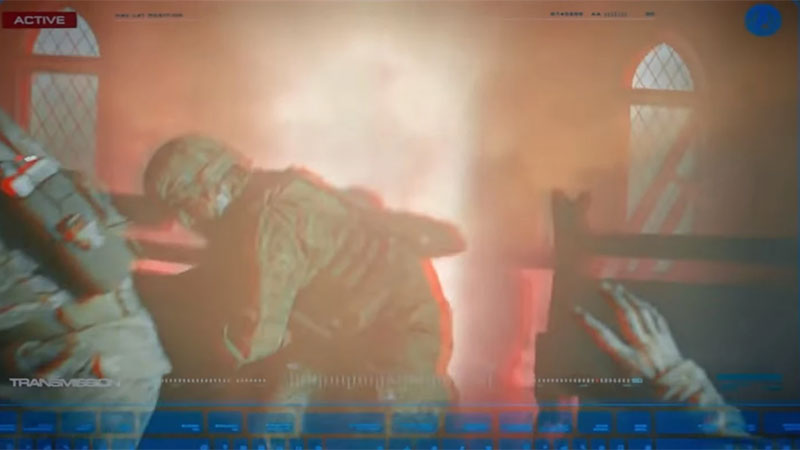
In Star Trek’s fictional timeline, World War III is one of the most consequential events in human history. Occurring from 2026 to 2053, it serves as the culmination of the so-called Eugenics Wars–conflicts fought over genetic engineering–and results in the deaths of over 600 million people.
It sets humanity back culturally, resulting in a second Dark Age marked by disease, famine, and other ills amid the collapse of democratic governments and the rise of fascist dictatorships. Most nation-states effectively cease to exist on a functional level, with their powers usurped by corporations, terrorist factions, and despots.
But while against all odds scientific advancement continues, marked by the invention of faster-than-light travel by Zefram Cochrane, suffering would also continue for decades all around the globe. Earth’s transition to becoming a member of the interstellar community is a slow and painful one plagued by continued resource skirmishes, totalitarianism, and overall bleakness in society. These conditions would take until at least the early 22nd century to be resolved.
I want to examine the history that leads up to World War III, how it likely unfolds, what nations are affected (if any are unaffected), and how such a nuclear conflict might play out in real life. I also want to examine how the so-called “post-atomic horror” of the late 21st century causes human society to unravel even more than it had before the war and how, with the help of the Vulcans, Earth is able to right itself and forge a new outlook in the 22nd century. This is: Star Trek’s World War III Explained.
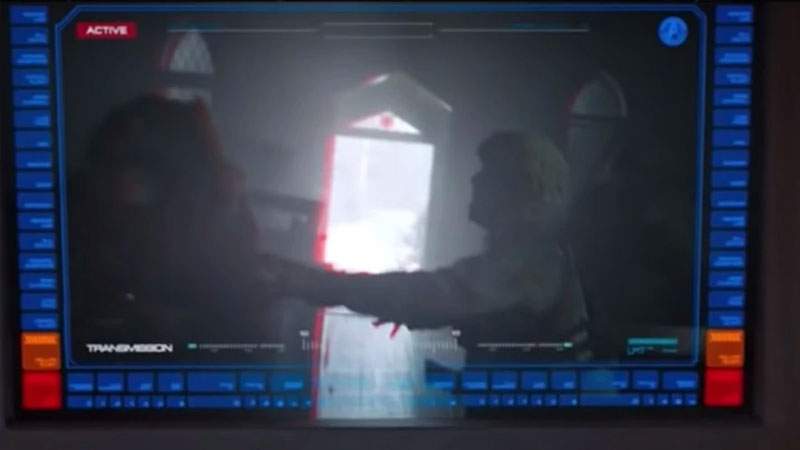
Background
A third world war has been a growing concern ever since the end of the second one in 1945. While the establishment of the United Nations, the North Atlantic Treaty Organization (or NATO), and various other international institutions were meant to help prevent future conflicts between nations, these organizations have been in many ways ineffective. Escalation of the Cold War towards a nuclear exchange has always been a somewhat unlikely but still possible scenario, from the Cuban Missile Crisis to a couple of other close calls during the 1980s.
It was only because cooler heads prevailed in several of these situations that this escalation never occurred, and humanity lived to see another day. Powers such as the United States, our allies, and our adversaries possessing rather large nuclear stockpiles throughout modern history has been a double-edged sword. On the one hand, it has ensured via the M.A.D. doctrine—Mutually Assured Destruction—those nations are deterred from using these weapons due to their destructive capability.
On the other hand, though, all it takes is a radical leader of any one nation to launch an offensive strike and start a chain reaction that ends in nuclear annihilation. At the time The Original Series was written, there were hints that World War III was supposed to happen in the 1990s during the reign of Khan Noonien Singh and the Augments.
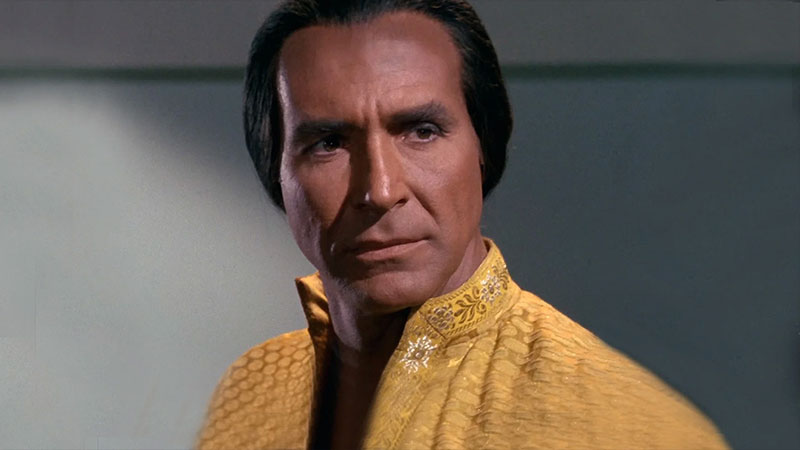
The global conflict among these Augment dictators—known as the Eugenics Wars—led to 30 million deaths. Since The Original Series, further distinctions have been made between the 1990s Eugenics Wars and the “real” World War III, a distinction introduced in Star Trek: First Contact and expounded upon in Enterprise and Discovery. I talk about this distinction in my video about Khan’s empire—link in the description.
While the conditions that ultimately led to World War III have their roots in the Eugenics Wars of the ‘90s, the continuous conflict itself is said, once again, to commence in 2026. Like the Eugenics Wars, one of the central issues—actually, the central issue—that causes the war to break out is genetic manipulation and human genome enhancement.
Call it a “Second Eugenics War.” It is the year 2026 when Colonel Phillip Green, a despotic militia leader, commands a faction of violent eco-terrorists whose actions lead to 37 million deaths. This is treated as a separate figure from the 30 million who died in the “First Eugenics War,” meaning between these two conflicts, the body count is higher than the number of civilians who died in the first two world wars COMBINED.
Some have also speculated that further root causes for this type of conflict lie in the political destabilization of several European countries during the 2020s. As we learn in The Next Generation episode “The High Ground” and the Deep Space Nine episode “Past Tense,” two years before the start of World War III, Ireland has been reunified through violence rather than peace, and France is torn between the Neo-Trotskyists and the Gaullists.
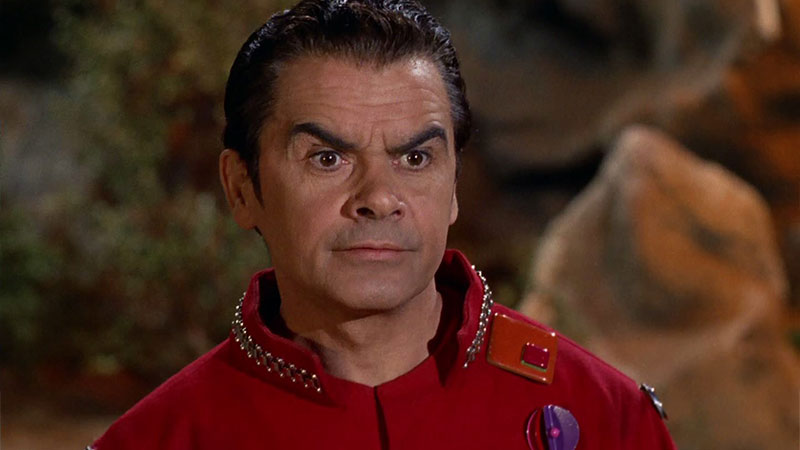
This type of political hyperpolarization definitely seems like it would be conducive to violence, and of course, for the first couple decades of World War III, such conflict would be marked less by the threat of a nuclear exchange and more so by, well, biological warfare. World War III is also denoted as the first world war that is fought primarily by “factions” instead of nation-states.
We can see parallels to both of these developments in our modern wars. Factions in the Syrian Civil War, for example, include opposing groups claiming to be the “legitimate” government of Syria, as well as the U.S.-allied Revolutionary Commando Army and, of course, ISIL. And of course, numerous leaders have used chemicals like sarin gas and other biological weapons against their people and the armies of other countries. Star Trek’s Third World War takes both of these elements to their extreme and introduces additional complexities, such as the use of narcotics to control soldiers.
The “factions” are different than just opposing governments within a single territory, however—they are cross-border alliances that wield the influence of global superpowers. The Eastern Coalition of Nations is one faction mentioned in canon, in fact, the only one specified by name on the screen. First mentioned in Star Trek: First Contact, the Eastern Coalition, or ECON, was always intended—according to production sources—to be a stand-in for China.
The ECON would routinely launch missile attacks on the United States and its allies as alluded to in the film. The exact nature of the ECON’s political structure is never defined—various novels posit it’s an alliance of countries like China, India, Pakistan, and others, although the idea that India and Pakistan would form a military alliance seems like kind of a stretch. Ultimately, it may be an extension of Chinese imperialism—more on that in a bit.
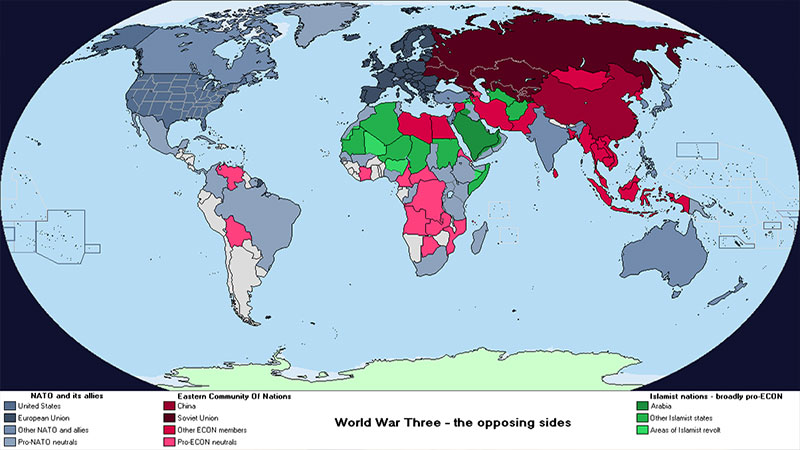
The Nuclear Exchange
During the final exchange, hundreds or even thousands of nuclear bombs—many in the multi-megaton range—are launched across land and sea. For context, a one-megaton blast over New York City would result in an estimated 1.3 million immediate fatalities. These bombs have yielded HUNDREDS of times that of the ones dropped on Hiroshima and Nagasaki COMBINED.
In fact, the most powerful nuclear bomb ever designed—the Soviet Union’s 100-megaton Tsar Bomba—generated a fireball radius of 7.92 kilometres. And the biggest nuclear test ever conducted, which was on a 50-megaton version of Tsar Bomba, generated a shockwave that circled the globe multiple times.
More likely, though, a nuclear war would be conducted with bombs that are “only” a few megatons in yield—probably something between the B83 nuclear bomb, the most powerful U.S. weapon currently in active service at 1.2 megatons, and the B53 bomb, the most powerful U.S. weapon in active service until 1997, which yielded 9 megatons.
A variant of the B53 warhead was equipped on the Titan II Missile system until it was dismantled towards the end of the Cold War. And the Titan II happens to be what was used for the outer casing on the Phoenix, Zefram Cochrane’s experimental warp vessel.
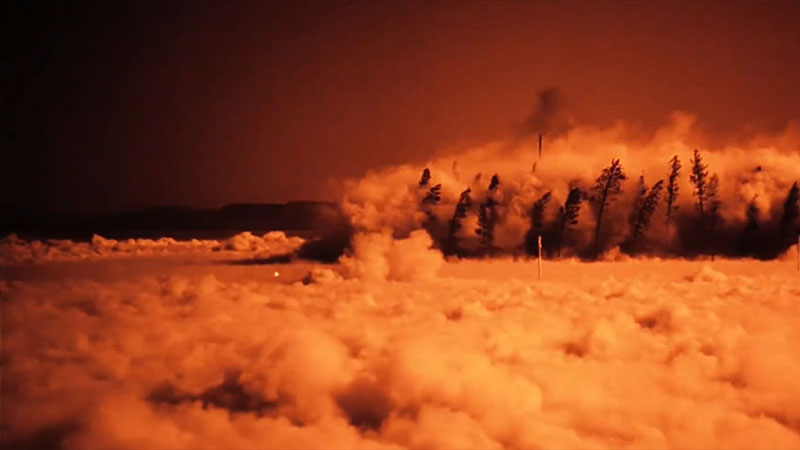
Anyway, those who don’t instantly die would suffer from radiation poisoning, the symptoms of which include nausea and vomiting, spontaneous bleeding, diarrhoea, and severely burnt skin that may peel off. Dying could take from several hours to several weeks, and 15% of survivors will eventually die of cancer as a result of exposure. The detonation of a SINGLE Dong-Feng 5, China’s current 5-megaton ICBM, would also create a fireball radius of 2.39 kilometres, a moderate blast damage radius—engulfed in fire—of 7.83 kilometres, a light blast damage radius of 20.1 kilometres, and a thermal radiation radius of 21.3 kilometres.
This means that everyone who isn’t instantly vaporized inside the fireball would still receive third-degree burns. But these people may not feel much pain as the burns will destroy nerve endings. In densely populated cities, millions would die immediately and millions more would be injured. The heaviest damage would happen within a 3.72-kilometre radius, with air 20 psi overpressure causing even heavy concrete buildings to collapse, and fatalities would approach 100%.
This is to mention nothing of the fallout, which could stretch downwind for HUNDREDS of kilometres. Multiple bombs of this yield would have to be dropped on each city to reach an estimated death count of half a billion, though many of these deaths could be people dying of radiation sickness weeks after the initial detonations. Either way, virtually every major urban area in every corner of the globe—New York, New Delhi, Moscow, London, Karachi, Jerusalem—they’re all being targeted. One source claims that the ECON has stricken first, with the New United Nations—a rump successor of the old U.N. composed of Western governments—acting in retaliation.
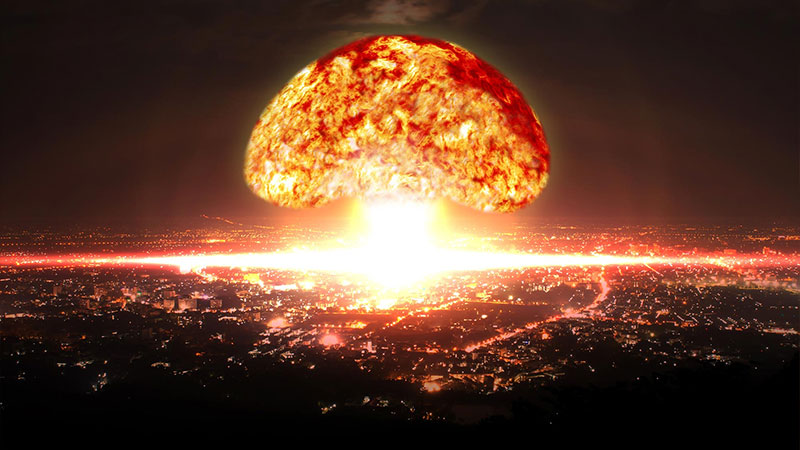
Okay, remember how I mentioned that the ECON could be a logical conclusion of Chinese imperialism? Well, in the decades leading up to this, China has been concentrating more and more political and economic clout in its region of the world. The ECON may be an outgrowth of the very real Shanghai Cooperation Organization, or Shanghai Pact, an economic, political, and security alliance created in 2001.
Among its members besides China? Several former Soviet states as well as…India and Pakistan. Yep. That’s how China, which currently possesses a relatively small nuclear arsenal, could gain access to enough nukes to rival the United States. The Shanghai Pact regularly conducts military exercises among members to promote cooperation in defence against terrorism and external threats. Its partners include ASEAN, or the Association of Southeast Asian Nations. And it comprises nearly half of Earth’s population.
The missile attacks are accompanied by cyberattacks and additional aerial bombings over smaller targets such as the one over Richmond, Indiana as seen in the Discovery episode “New Eden.” After the immediate attacks, conventional military forces mobilize into an offensive position as the ECON launches a land invasion of the North American continent—think Fallout. Many ground soldiers will be lost in the battle between the U.S. and the ECON.
Even in the aftermath, there will be little in the way of major urban infrastructure to defend. Rural areas will, again, for the time being, be the last vestiges of modern civilization as warlords compete over the remaining resources and people like Green carry out further atrocities against war-weary populations.
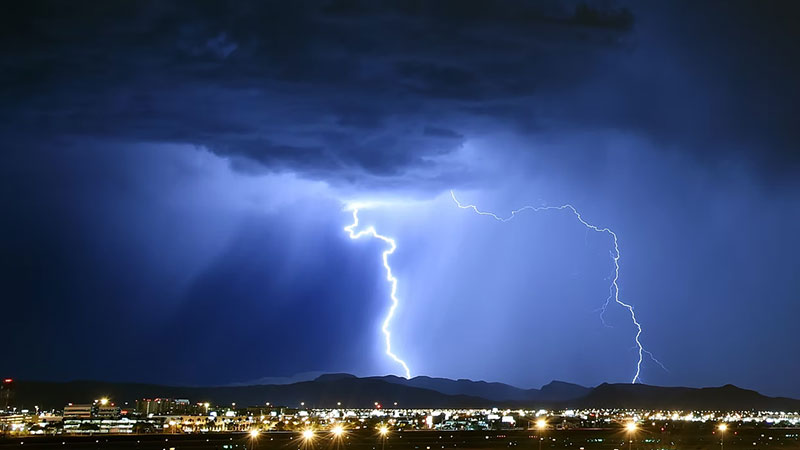
Nuclear Autumn
Just how bad is the aftermath going to get? Well, besides the collapse of national governments and the ensuing skirmishes over resources, nuclear fallout from the obliteration of major cities would threaten the health of survivors. Disease, famine, economic destitution and a new rise in authoritarianism—these are all understatements as to the severity of this post-World War III period in human history.
Climate scientists have written about the detrimental effects that even a “small” nuclear exchange—for example, between India and Pakistan—could cause. So much smoke would be produced that it could lower global temperatures “below those of the Little Ice Age of the fourteenth to nineteenth centuries, shortening the growing season” and putting 2 billion people at risk of starvation.
As Alex Ward wrote in a 2018 article for Vox, “Ira Helfand, a board director at the anti-nuclear war Physicians for Social Responsibility, calls this scenario a ‘nuclear autumn.’”[1] The severity of this conflict could be even starker in the event of a TRULY global war, involving—like I said—yields far beyond a bilateral exchange. The collapse of governments is one thing…this would threaten the extinction of the human race.
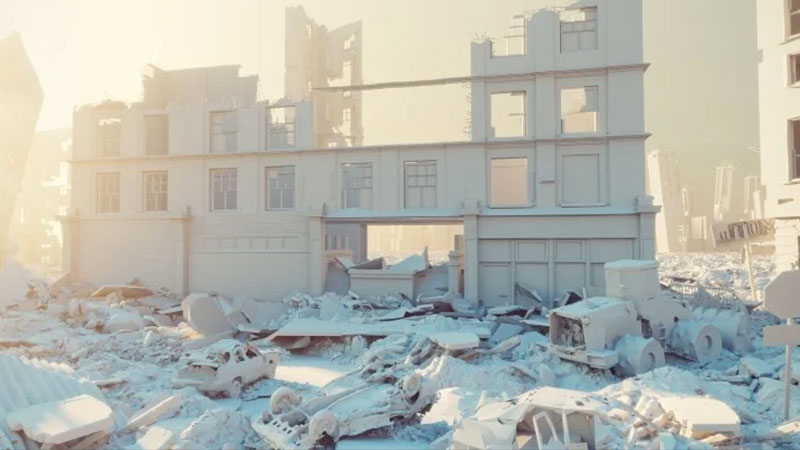
Nuclear Winter
The period following the detonation of nuclear weapons is referred to as the “post-atomic horror.” Lasting from 2053 to at least 2079, the year of the courtroom shown by Q to the Enterprise crew in The Next Generation pilot “Encounter at Farpoint,” this post-atomic horror was marked by the breakdown of civil society, denial of rights to alleged criminals, and extended nuclear winter.
This in particular would affect the global temperature rise and be devastating to crops and other necessities for comfortable human life. During this time, the war-stricken populations of various Earth countries fall victim to anarchy in some places and overt fascism in others. Colonel Green advocates for the euthanasia of those with radiation sickness, framing this genocide as “reject[ing] the impure and cast[ing] it out.” The New United Nations would have fallen by this point, and even after First Contact, leaders on Vulcan would be sceptical that humanity was ready to venture out into the stars.
A paper in the Journal of Geophysical Research paints a grim picture of what would happen in the absolute doomsday scenario of a nuclear winter. According to the paper, “the roughly 150 million tons of black smoke rising from burning cities and other areas would spread around to most of the planet over weeks.” This would plunge temperatures on the planet’s surface “by about 17 to 20 degrees Fahrenheit for the first few years” before coming back up by about 5 degrees Fahrenheit over the next decade.
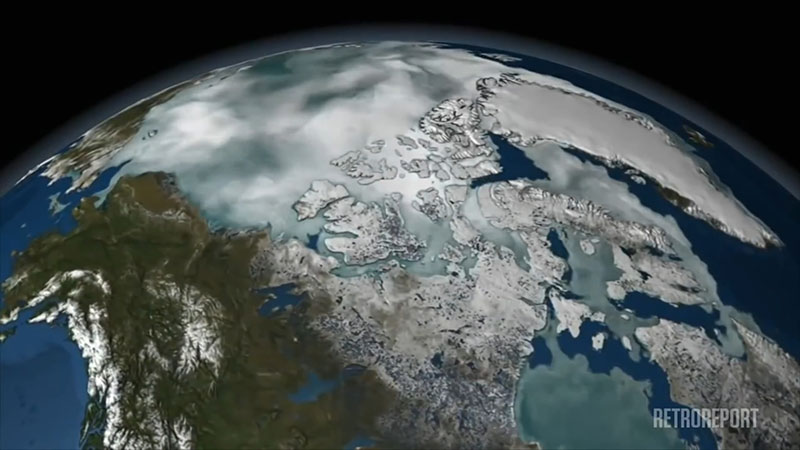
Cities in the Northern Hemisphere would suffer the worst of the blow, experiencing the coldest temperatures—through the entire globe, and particularly the global food supply chain would be affected. Global precipitation would also fall by about 45 per cent. And if that’s not enough, this nuclear exchange would deplete the Earth’s ozone layer, allowing large amounts of ultraviolet light to reach the surface and harming ecosystems. According to the paper, for years, a Caucasian person could not go outside without getting sunburned.[2]
Using the most optimistic outcome for a global war that kills over half a billion, this means that even ten years after the conflict ends—in other words, by 2063, when First Contact takes place—the environment would still be badly damaged, and too much radiation exposure would continue to cause cancer in starving humans. This would mean that Colonel Green’s calls for euthanasia of radiation-stricken people would spell a death sentence for, indeed, millions of people.
Also, this could partly be the reason that Cochrane looks older than he is in First Contact—James Cromwell was fifty-six years old during the time of the production, but Cochrane’s canon birth year is in the early 2030s—meaning he was in his early 30s in 2063. Various sources account for this discrepancy by speculating his aged appearance is, in fact, the result of radiation poisoning. Even if his birth year were retconned to be earlier than 2030, Cochrane and many of the other civilians at his facility in Montana would still be at high risk of developing cancers later in life from cumulative exposure to UV radiation and slow poisoning from radioactive fallout.
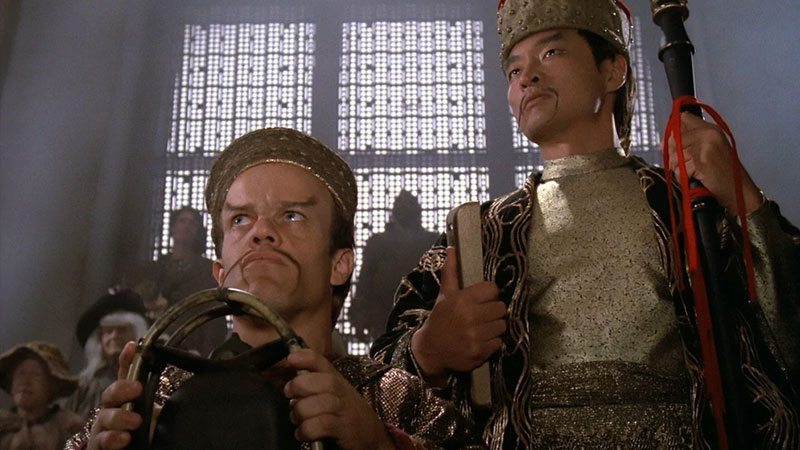
Earth’s Political Shakeup
We become privy to quite a bit of relevant information about post-atomic horror’s effects on human society through “Encounter at Farpoint.” One culture that we bear witness to during Q’s simulated trial has resorted to near barbarism. New legal systems that have popped up around the globe are characterized by martial law. Criminals are guilty until proven innocent, and judges hand down summary executions.
As Captain Picard observes, such cultures have taken the credo “Kill all the lawyers”—a line from Shakespeare’s King Henry VI—literally. Picard further remarks that due to these and other factors, many parts of Earth continue to be in a state of chaos well into the early 22nd century. This “chaos” would entail things like gang rule over entire regions, such as by the drug-addled “fourth world mercenaries” who fought on behalf of factions like the ECON in World War III.
While all this is going on, Cochrane also helps usher in a new era for humanity in spaceflight. The 2063 first contact with the Vulcans becomes the defining moment in human history, as it sets humanity on a new path towards a more enlightened state.
While conditions deteriorate during the final quarter of the 21st century, the seeds are sown that will later blossom into the idealistic society of the 22nd century, with the resource-based New World Economy taking shape. In future videos, I may dive deeper into the details surrounding the formation of United Earth and how humanity could have achieved true prosperity. In the meantime, I hope that this has been an informative take on just exactly how Earth’s World War III could have unfolded in the Star Trek universe.
If you want to support my work even further, becoming a patron at patreon.com/orangeriver is a great way to do so.
Watch The Latest Video By Orange River Media Below
This article took almost a year to write, shoot, and edit from start to finish. I’ve been working on it off and on for most of 2021 so that I could deliver a quality product for your entertainment. I want to thank everyone involved in assisting with the production of this video, I want to thank you for making it possible.
Without the support of my subscribers, and especially without the support of my patrons and YouTube members, I wouldn’t have been able to make this, and I mean that sincerely. If you want to see more content like this, signing up to become a patron or member will help make that a reality. And you’ll receive other benefits like behind-the-scenes photos and videos, exclusive polls, merch discounts, and more.
We’ll be back to our regularly scheduled programming next week here at OrangeRiver…live long and prosper.

